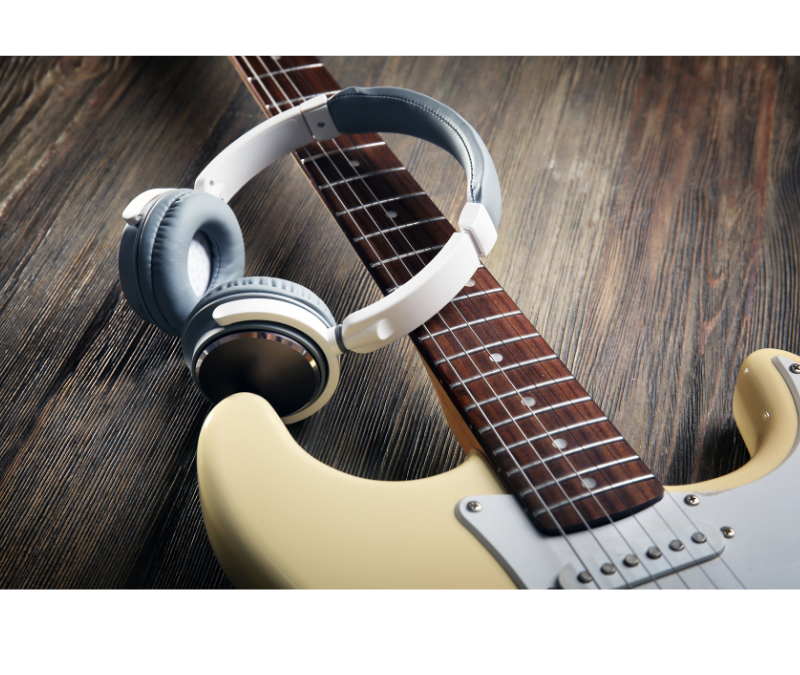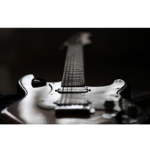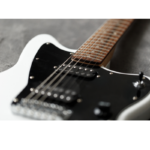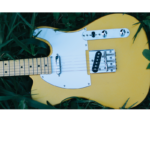Introduction
Guitar players, whether beginners or seasoned professionals, often turn to pentatonic scales as a fundamental building block of their playing. The pentatonic scale, with its five-note simplicity, is a versatile and essential tool in the guitarists’ toolkit, particularly in the realms of rock, blues, and jazz. In this blog post, we will jump into the pentatonic guitar scales tab, focusing on how to play them in the key of C, how blues guitarists craft licks with these scales, and three unique ways to practice them to elevate your playing. Let’s get started!
Understanding the Pentatonic Scale: Pentatonic Guitar Scales Tab
The word “pentatonic” comes from the Greek word “pente,” meaning five, and “tonic,” meaning tone. Thus, a pentatonic scale consists of five notes. There are two main types of pentatonic scales: the major pentatonic and the minor pentatonic.
- Major Pentatonic Scale: This scale includes the first, second, third, fifth, and sixth notes of the major scale.
- Minor Pentatonic Scale: This scale comprises the first, flat third, fourth, fifth, and flat seventh notes of the natural minor scale.
The C Major Pentatonic Guitar Scale Tab
The notes in the C major pentatonic scales tab are: C, D, E, G, and A.
Here is the C major pentatonic scale on the 8th fret:
e|-----------------------------------8-10-|
B|-----------------------------8-10-------|
G|---------------------7-9----------------|
D|---------------7-10---------------------|
A|--------8-10----------------------------|
E|-8-10-----------------------------------|
The C Minor Pentatonic Guitar Scale Tab
The notes in the C minor pentatonic scale are: C, Eb, F, G, and Bb.
Here is the C minor pentatonic scale played on the 8th fret.
e|------------------------------------8-11-|
B|-------------------------------8-11------|
G|-------------------------8-10------------|
D|-------------------8-10------------------|
A|-------------8-10------------------------|
E|------8-11-------------------------------|
Crafting Blues Licks with the Pentatonic Guitar Scales Tab
Blues guitarists often rely heavily on the minor pentatonic scale to create soulful and expressive licks. The minor pentatonic scale’s structure lends itself well to bending notes and adding vibrato, techniques that are staples in blues music.
Classic Blues Lick Example
A classic blues lick in C minor pentatonic might look like this:
e|-------------------------------| B|-------------------------------| G|-8b10-8~------8b10r8-6---------| D|---------10------------8-------| A|-------------------------------| E|-------------------------------| This lick incorporates a bend on the G string, hammer-on and pull-off techniques on the B string, and resolves on the root note (C) on the high E string.
Emphasizing the Blue Note
Blues guitarists often add the “blue note” to their minor pentatonic scales. The blue note in the C minor pentatonic scale is the flat fifth (Gb). Incorporating this note can add a distinctively bluesy flavor to your licks.
E|---------------------8--|
B|--------------8h11-----|
G|--------8b10--8--------|
D|--10-------------------|
A|-----------------------|
E|-----------------------|
In this lick, the addition of the blue note (Gb) on the G string (10th fret) provides a tension that resolves beautifully back to the root note.
Three Unique Ways to Practice Pentatonic Guitar Scales Tab
Practicing Guitar scales tab can sometimes feel monotonous, but it doesn’t have to be. Here are three unique ways to practice pentatonic scales that will keep you engaged and improve your playing.
1. The Three-Note Per String Method
One effective way to practice pentatonic scales is by using the three-note per string method. This approach can help you break out of the typical box patterns and develop more fluidity across the fretboard.
Here’s how you might practice the C major pentatonic scale using three notes per string:
e|-------------------------------5--8--10--|
B|-------------------------5--8-------------|
G|----------------5--7--9-------------------|
D|-----------5--7--------------------------|
A|-----5--7--------------------------------|
E|--8--------------------------------------|
By incorporating three notes per string, you can create longer, more connected lines and improve your ability to navigate the fretboard.
2. Intervallic Jumps
Another unique practice method is to focus on intervallic jumps within the pentatonic scale. This technique can help you create more interesting and dynamic solos.
Here’s an example using the C minor pentatonic scale:
e|-----------------------------------------|
B|--8--11--8--11--8--11--8--11-------------|
G|--------------8b10----------8b10---------|
D|--------10-------------10----------------|
A|--8--11-------8--11-------8--11----------|
E|-----------------------------------------|
By jumping between different intervals, you can develop a sense of spacing and movement that adds complexity to your playing.
3. Rhythmic Variations
Rhythmic variation is another excellent way to practice pentatonic scales. Try playing the scale using different rhythmic patterns, such as triplets, syncopation, or dotted notes.
Here’s an example of the C major pentatonic guitar scales tab played with triplets:
e|--------------------5--8--|
B|--------------5--8--------|
G|--------5--7--------------|
D|----5--7------------------|
A|--7-----------------------|
E|--------------------------|
By varying the rhythm, you can develop better timing and groove, which are essential for expressive soloing.
Applying Pentatonic Scales in Different Musical Contexts
The pentatonic scales are not limited to blues; they are widely used across various genres of music. Here’s how you can apply them in different musical contexts.
Rock and Metal
In rock and metal, the minor pentatonic scale is often used for powerful and emotive solos. Players like Jimmy Page and Slash are known for their extensive use of this scale. Adding distortion and aggressive picking techniques can enhance the impact of your solos.
Jazz and Fusion
In jazz and fusion, the pentatonic scales are often combined with other scales and modes to create sophisticated lines. Players like John Scofield and Allan Holdsworth use pentatonics within their improvisations, often superimposing different pentatonic scales over complex chord changes.
Country and Folk
In country and folk music, the major pentatonic scale is commonly used. Guitarists like Brad Paisley and Vince Gill use the major pentatonic scale to create bright, melodic solos that fit perfectly within the genre’s harmonic structure.
Conclusion
The pentatonic guitar scales are a cornerstone of guitar playing, offering endless possibilities for creativity and expression. By understanding how to play them in the key of C, crafting blues licks, and exploring unique practice methods, you can unlock new dimensions in your guitar playing. Whether you’re jamming with friends, composing your own music, or playing in a band, mastering the pentatonic scales will give you the tools to create captivating solos and melodies. So grab your guitar, dive into the world of pentatonic scales, and let your musical journey begin!

Download The FretDeck & Pentatonic Secrets Course!
Download Our Course









